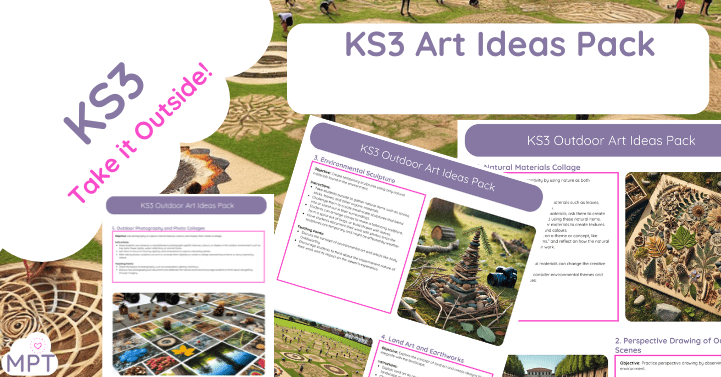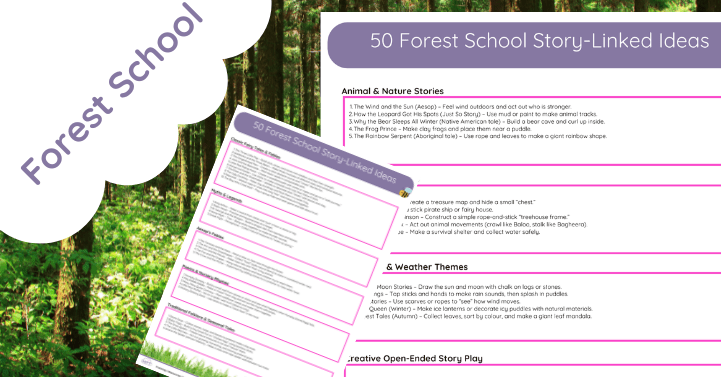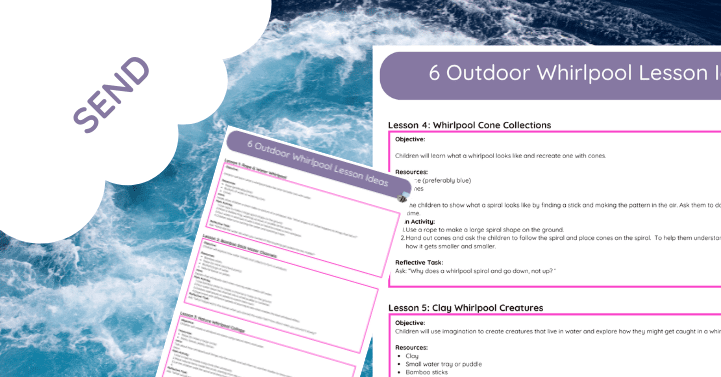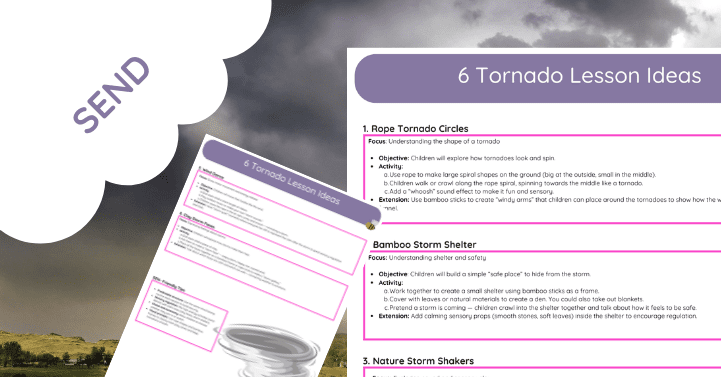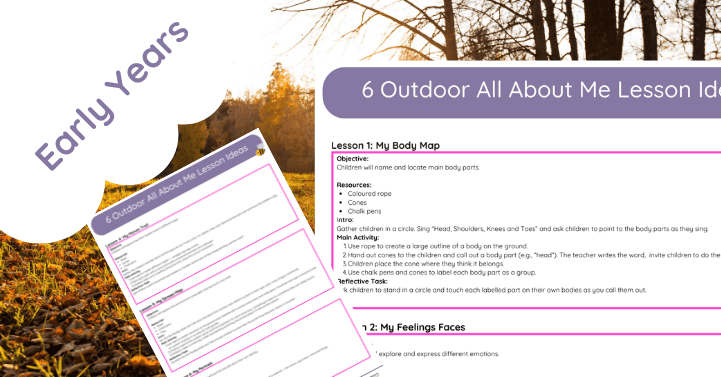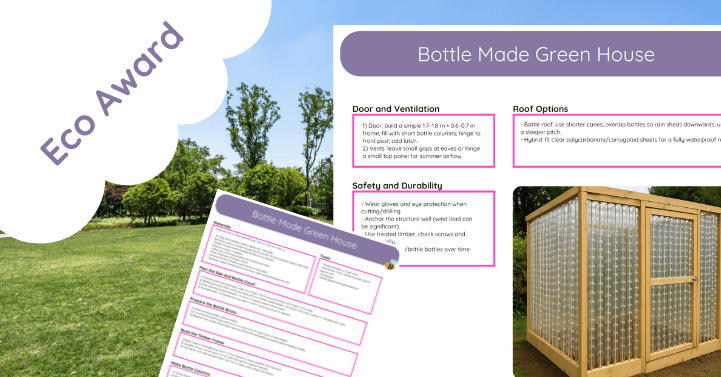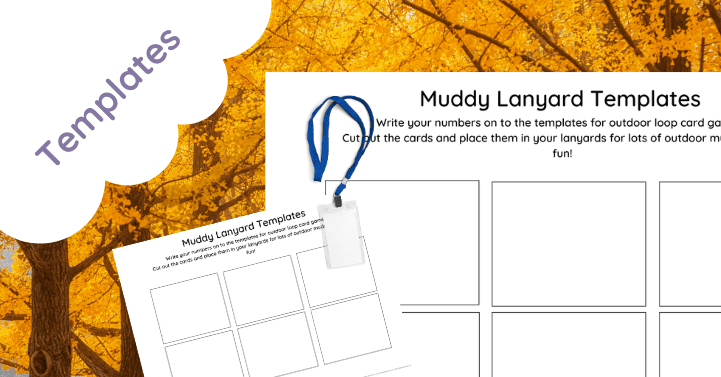KS3 Outdoor Art Ideas Pack
Unleash creativity in the great outdoors with the KS3 Outdoor Art Ideas Pack! Designed to inspire and engage KS3 students, this pack offers a collection of innovative, hands-on art projects that connect students with nature. Each activity encourages students to explore different artistic techniques, from sculpture to photography, using natural materials and the environment as their canvas. Perfect for art teachers looking to expand their lessons beyond the classroom, this ideas pack makes outdoor learning creative, accessible, and relevant to students’ lives.
Key Features:
- Diverse Art Activities: Includes five unique activities covering sculpture, land art, photography, perspective drawing, and natural material collage—each tailored to help students explore and connect with the outdoor environment.
- Hands-On, Experiential Learning: Activities encourage students to touch, observe, and interact with their surroundings, making art concepts like texture, composition, and scale tangible and memorable.
- Real-World Artistic Inspiration: Introduces students to renowned environmental artists like Andy Goldsworthy, Robert Smithson, and Richard Long, helping them see how art can connect with nature and reflect environmental themes.
- Flexible and Easy-to-Adapt: Suitable for various outdoor spaces—from school fields to nearby parks—these activities can be adapted to fit different group sizes, time frames, and skill levels.
- Builds Skills Beyond Art: This activity helps students develop observation, teamwork, and problem-solving skills, encouraging creative thinking in a real-world setting.
Sample Activities Included:
- Natural Materials Collage: Students gather leaves, sticks, and other items to create layered collages, exploring texture and colour while designing themed artworks.
- Perspective Drawing Outdoors: Focused on one- and two-point perspective, this drawing activity lets students capture scenes in nature and practice depth and proportion.
- Environmental Sculpture: Students use natural materials like stones, sticks, and leaves to create temporary, small-scale sculptures that interact with their surroundings.
- Land Art on the Field: Inspired by land artists, students make large-scale designs on the school field using rocks, dirt, and chalk, exploring how scale and space affect their work.
- Outdoor Photography Collage: Students capture textures, shapes, and colours in nature, then arrange their photos into a digital or printed collage that tells a story or follows a theme.
The KS3 Outdoor Art Ideas Pack brings art alive outside the classroom, providing students with creative, immersive experiences that connect artistic concepts with the world around them. It is perfect for art teachers seeking dynamic, outdoor-focused lessons that make art relevant, engaging, and fun!
The Importance of Teaching Outside in Secondary Schools for Today’s Children
With the growing emphasis on technology, structured schedules, and standardized testing, many students spend their school days indoors, which can be limiting for both their physical health and mental well-being. As research highlights the benefits of outdoor learning, more secondary schools are exploring ways to take classes outside. Teaching outside offers unique opportunities for hands-on learning, creativity, and improved student engagement, providing significant advantages for modern-day learners.
Here’s why teaching outside in secondary schools is essential, along with resources for further reading on the benefits of outdoor education.
1. Enhances Engagement and Motivation
Learning outside encourages engagement and focus. The novelty of an outdoor environment can be invigorating, helping students stay alert and motivated. For example, science classes might study ecosystems in nature or observe biodiversity, while art classes can find inspiration in landscapes, light, and textures that simply don’t exist indoors.
Edutopia emphasizes that outdoor learning environments help boost motivation and participation, which is especially useful for students who struggle to stay engaged in a traditional classroom. The opportunity to learn outside can provide a welcome change of pace, leading to increased enthusiasm for learning.
2. Improves Physical Health and Well-Being
Outdoor learning incorporates physical movement, whether it’s through walking, exploring, or even just changing locations. Physical activity is linked to better concentration, reduced stress, and improved mood, all of which enhance learning.
According to the Centers for Disease Control and Prevention (CDC), regular physical activity supports mental health, reduces anxiety, and improves focus. Learning outdoors provides students with more opportunities to move, which benefits their physical and mental health.
3. Promotes Social and Emotional Development
Learning outside often involves group work and teamwork, fostering collaboration and building social skills. Outdoor settings naturally create a more relaxed atmosphere, where students feel more comfortable and open to socializing, communicating, and working together.
Greater Good Science Center at UC Berkeley notes that social and emotional skills are critical for success in today’s world. Outdoor learning provides the perfect setting for students to build these skills as they navigate teamwork, solve problems, and communicate in new ways.
4. Reduces Stress and Anxiety
With the pressures of academics, exams, and digital distractions, stress levels in secondary school students are higher than ever. Learning outside in green spaces is proven to be calming, helping reduce stress and support mental health.
The American Psychological Association (APA) highlights that spending time in nature can lower stress levels and improve mental well-being. For students who feel overwhelmed, outdoor learning provides a healthy outlet to decompress while staying engaged in their studies.
5. Encourages Environmental Awareness and Stewardship
When students learn outside, they naturally become more connected to the environment, fostering respect and understanding of nature. Learning about ecosystems, climate, and sustainability outside helps students build a stronger connection to these topics and recognize their role in protecting the planet.
The National Wildlife Federation (NWF) encourages outdoor education to promote environmental stewardship. By teaching students in natural settings, schools can cultivate a generation that cares about conservation and sustainable practices, which is essential today.
6. Supports Active, Hands-On Learning
Outdoor settings allow for more interactive, hands-on learning experiences, which can enhance comprehension and retention of material. Whether it’s conducting experiments in a science lesson, practising measurement in math, or creating artwork in an art class, outdoor spaces bring lessons to life in meaningful ways.
The National Association for the Education of Young Children (NAEYC) highlights that hands-on, experiential learning can improve long-term understanding of concepts. Taking learning outside allows students to directly engage with their environment, making abstract concepts more concrete and memorable.
7. Reduces Screen Time and Promotes Digital Balance
In a world where screens dominate school and leisure time, outdoor learning provides a break from technology. While technology has its place, secondary students benefit from regular breaks that allow them to connect with the real world.
Common Sense Media points out that excessive screen time can increase stress and cause issues with student attention. Schools provide a natural balance by incorporating outdoor lessons, helping students disconnect and improve their focus.
8. Improves Academic Performance and Retention
Studies show that outdoor learning can improve academic performance and increase retention rates. A change in environment stimulates the brain and encourages active participation, making lessons more engaging and memorable.
Research from the University of Plymouth found that outdoor learning helps students retain information and understand complex concepts. Outdoor education allows students to experience material firsthand, particularly helpful for kinesthetic learners who may not thrive in traditional settings.
9. Fosters Creativity and Critical Thinking
Outdoor settings stimulate creativity, allowing students to observe patterns, explore natural design, and solve real-world problems. The natural environment encourages critical thinking and creativity in science, art, or literature.
According to Education Scotland, outdoor learning enhances creativity and critical thinking. Observing nature and exploring diverse settings encourages students to ask questions, think creatively, and find new ways to understand the world.
10. Encourages Independence and Self-Confidence
Outdoor learning provides more freedom and autonomy, helping students develop self-confidence and independence. When given the chance to explore, take risks, and make decisions outside, students learn to rely on themselves, boosting their self-esteem and resilience.
Harvard Graduate School of Education emphasizes the importance of independence in learning, suggesting that outdoor settings allow students to own their work. This freedom not only improves self-confidence but also instills a sense of responsibility for their own learning.
Practical Tips for Teaching Outside in Secondary Schools
If you’re ready to take your lessons outside, here are some practical tips:
- Start Small: Begin with short, simple lessons outside and build from there.
- Choose Engaging Subjects: Subjects like science, art, and literature can be particularly impactful outdoors.
- Be Prepared: Have clear objectives and bring any necessary materials to make the lesson smooth and successful.
- Encourage Observation: Prompt students to notice details, ask questions, and reflect on their surroundings.
- Reflect and Review: Have students share their experiences afterwards and reflect on what they learned.


